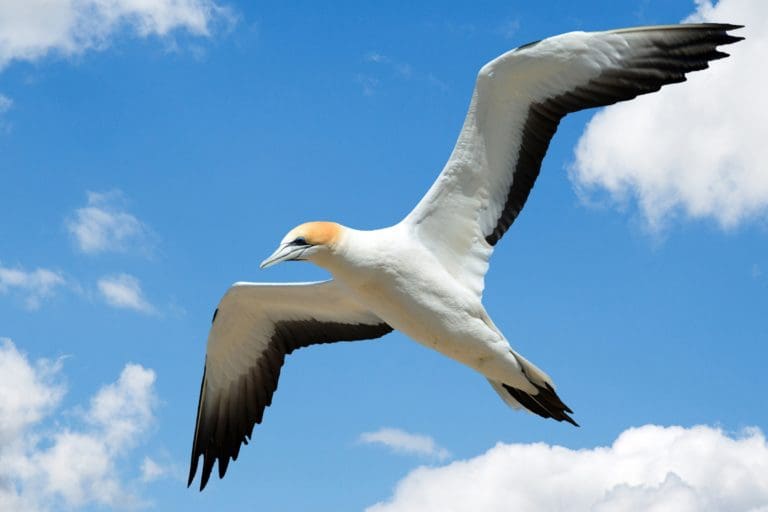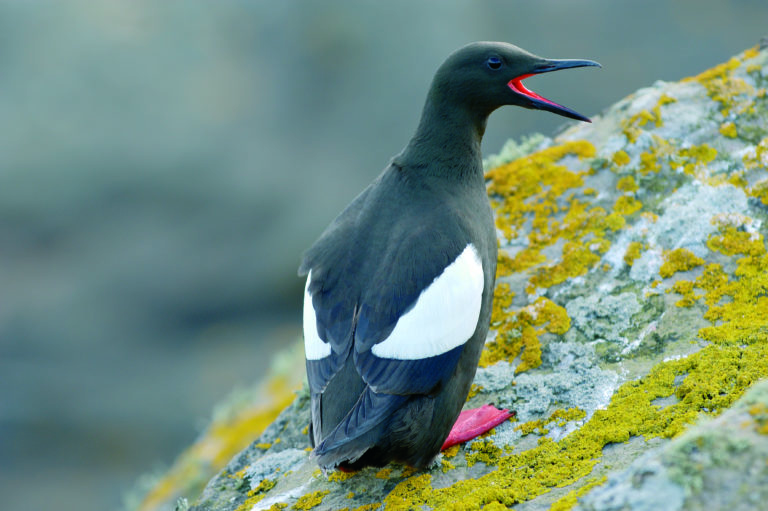



The seabird monitoring programme surveys seabird populations across Shetland and has been carried out since 1978. Factors such as the innate mobile nature of birds, migration patterns and their vulnerability to floating oil slicks and illegal discharge from passing tankers have all been taken into account when designing the programme.
The programme also complements similar survey work conducted during the breeding seasons by Scottish National Heritage, the Royal Society for the Protection of Birds and by Fair Isle Bird Observatory Trust.
Surveying of cliff-nesting seabird populations – Northern Fulmar, European Shag, Black-legged Kittiwake, Common Guillemot, Razorbill and Black Guillemot (also known as Tystie),
Pre-breeding season population counts of black guillemots
Monitoring of breeding red throated divers
Population counts of moulting common eiders
Winter counts of diving seabirds and seaducks.
Beached bird surveys – monthly surveys of beached seabirds on selected beaches. If any oil is present on the birds, then it is analysed to identify the origin and possible source of pollution.
Seabird ringing scheme.
Supplementary monitoring – contribution to surveys carried out on the Island of Foula relevant to SOTEAG’s needs.
Scientific evidence from the 2019 seabird monitoring programme.
A lot of the 2020 seabird monitoring was not possible due to the Covid-19 pandemic.
Northern Fulmar Fulmarus glacialis, Monitoring of the standard Fulmar population and breeding success sites was not possible due to Covid-19 in 2020. In 2019 population counts were very similar to those in 2018. Mean breeding success across the four monitored sites was also similar to 2018 (0.38 chicks fledged per AOS in 2019, 0.40 in 2018).
European Shag Phalacrocorax aristotelis, Monitoring of the standard Shag population sites was not possible due to Covid-19 in 2020. In 2019 It was an unusually productive season in south Mainland Shetland, with population counts (nests) at Sumburgh Head and No Ness up by 28.9% and 50.6%, respectively, since 2018 and breeding success at Sumburgh Head 1.54 chicks fledged per incubated nest, up from 1.07 in 2018. At Burravoe, in Yell, breeding success was 1.08 chicks fledged per incubated nest, down from 1.55 in 2018.
Black-legged Kittiwake Rissa tridactyla, Monitoring of the standard Black-legged Kittiwake population sites was not possible due to Covid-19 in 2020. The population count at Compass Head was 35 nests, down by 22% since 2018. Population changes along the new monitoring transects, first surveyed in 2018, were variable, with increases of 3.2% and 7.7% at the Fetlar and the southeast Mainland transects but a decrease of 14.8% at the southeast Yell transect. Mean breeding success across five monitored sites was 0.63 chicks fledged per laying pair, down from 0.95 in 2018.
Common Guillemot Uria aalge, Monitoring of the standard Guillemot population sites was not possible due to Covid-19. The mean population index was 47.1, slightly lower than in 2018 (49.8). Breeding success at Sumburgh Head was 0.76 chicks fledged per apparently incubating pair, the fourth highest record since 1989 and up by 40.7% since 2018. Chick diet was 93% gadids and 6% sandeels.
Razorbill Alca torda, Monitoring of the standard Razorbill population and breeding success sites was not possible due to Covid-19. The mean population index was 40.7, the second highest record since 2006 and only slightly lower than the value of 41.7 in 2018. Breeding success at Sumburgh Head was 0.64 chicks fledged per laying pair, the joint-highest value on record (with 2016) and up by 39.1% from 2018.
Two coastline transects for Shag population monitoring were added to the monitoring programme.
Two coastline transects including more nests for Kittiwake population monitoring were added to the monitoring programme.
Pre-breeding season population counts of Black Guillemots Cepphus grille revealed:
Changes in population counts (individuals in full breeding plumage) since the most recent previous surveys were variable across the standard monitoring sites, though the long-term pattern at most is population stability. A survey of the Sullom Voe Terminal jetties recorded 78 birds in full breeding plumage, compared with 88 in 2018.
Monitoring of breeding Red-throated Divers Gavia stellata revealed
Population surveys of the monitored area in Northmavine confirmed 16 breeding attempts, down from 23 in 2017. Breeding success per breeding attempt was up from 2017.
As is normal in years with a Shetland-wide population census of moulting Common Eiders, the Red-throated Diver monitoring was omitted in 2019.
Population counts of moulting Common Eiders Somateria mollissima revealed:
The total census count was 3639 birds, down by 20.9% since 2015 (the most recent previous census). The 2019 census total extends the general pattern of long-term decrease in moulting Common Eider numbers across Shetland since 1997. The estimated total proportional decrease in numbers from 1997 to 2019 was -58.6%.
Winter counts of seaduck and diving seabirds revealed:
Six of the seven standard monitoring transects were surveyed in January and February 2019, and two of the seven in December 2019. Counts were within the normal range. In most of the survey areas, there has been a long-term pattern of decrease in numbers of
Common Eiders in winter, in agreement with the general long-term pattern of decrease in numbers in late summer across Shetland.
Unusually little oil was found in 2019, it was an exceptionally clean year on the
surveyed beaches. Only five oiled seabirds were found. Three were sampled and the oil analysed, with two samples identified as fuel oil and the other crude oil, with similarities to crude oils from the East Shetland Basin but not an exact match. All samples likely originated from accidental release or illegal discharge. There were no incidences of oiling in September through to the end of the year, or of abnormally high mortality of
any seabird species during the year.








